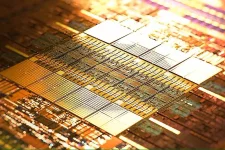New tariffs might backfire on US chip manufacturing goals. Companies like TSMC already face challenges when making chips in America due to higher costs, and these new trade rules make everything worse.
Under the tariffs, equipment for making chips will cost about 15% more. This pushes total production costs up 32% compared to making the same chips in Taiwan. Chipmakers will need to charge more for American-made products, defeating the purpose of bringing manufacturing back.
The situation creates an unexpected advantage for Intel. American tech companies might find Intel's US-made chips cheaper than importing from TSMC or using TSMC's American facilities. The problem remains that Intel lags in advanced chip technology.
Trump claimed he forced TSMC to build American factories with tariff threats. However, these same policies create confusion about the administration's true goals. The manufacturing landscape looks uncertain as companies try to navigate changing trade rules.
All these industry complications eventually reach regular consumers. People buying electronics will pay more as manufacturers pass along their increased costs. The chip supply chain remains caught between business needs and government policies.
Under the tariffs, equipment for making chips will cost about 15% more. This pushes total production costs up 32% compared to making the same chips in Taiwan. Chipmakers will need to charge more for American-made products, defeating the purpose of bringing manufacturing back.
The situation creates an unexpected advantage for Intel. American tech companies might find Intel's US-made chips cheaper than importing from TSMC or using TSMC's American facilities. The problem remains that Intel lags in advanced chip technology.
Trump claimed he forced TSMC to build American factories with tariff threats. However, these same policies create confusion about the administration's true goals. The manufacturing landscape looks uncertain as companies try to navigate changing trade rules.
All these industry complications eventually reach regular consumers. People buying electronics will pay more as manufacturers pass along their increased costs. The chip supply chain remains caught between business needs and government policies.












